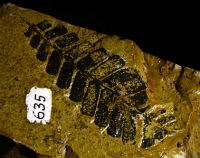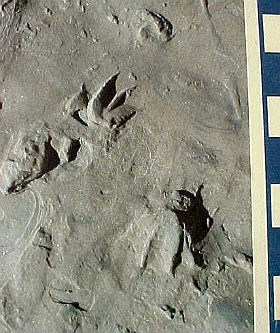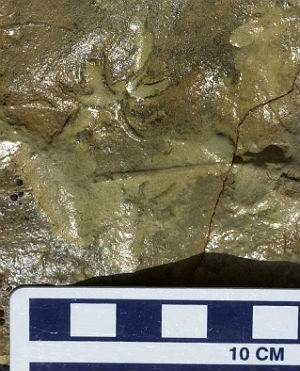
NPS photo / Scott Ireland Plant fossils have been found within the Moenkopi in Zion, including the fossilized fern at right. These plants would have grown along the banks of streams that slowly meandered their way to the coastline, or grew in moist areas near shallow lakes.

NPS photo South of the park in Arizona, vertebrate bones from early reptiles and amphibians have been discovered, making this an important formation inside the park for possible future discoveries.

NPS photo / Jenny McGuire The photo at right shows "resting traces" of brittle stars--impressions left where these relatives of starfish lay on sediment at the bottom of the shallow sea. These trace fossils were found in the Virgin Limestone Member of the Moenkopi Formation.
Learn how footprints become fossils
Learn more about the Moenkopi Formation
Return to the main Paleontology page
|
Last updated: July 6, 2015
